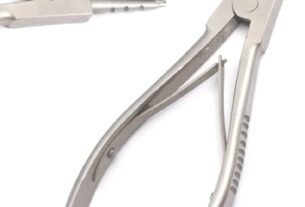If you’re an avid woodworker, you know that having the right tools is crucial to achieving high-quality results. One tool that should be in every woodworker’s arsenal is the V tool. With its unique shape and versatility, this tool can help you achieve precise cuts, intricate designs, and beautiful carvings.
In this article, we’ll take a closer look at the V tool and explore its many uses. From carving to engraving to lettering, we’ll show you how to get the most out of this essential woodworking tool.
What Is a V Tool?
Before we dive into the many uses of the V tool, let’s first define what it is. A V tool is a chisel with a v-shaped cutting edge that is used for carving and shaping wood. The blade of the tool has two beveled edges that meet at a point, creating a sharp point that can be used for fine detail work.
The v-shaped cutting edge of the V tool makes it ideal for creating crisp lines and sharp angles. It can be used for both shallow and deep cuts, making it a versatile tool for all kinds of woodworking projects.
Types of V Tools
There are several types of V tools available on the market, each designed for specific tasks and projects. Here are some of the most common types:
1. Straight V Tool – This is the most basic type of V tool, with a straight blade that creates a uniform depth cut. It’s ideal for creating grooves or channels in wood.
2. Bent V Tool – This type of V tool has a bent blade that allows for greater flexibility when working on curved or irregular surfaces.
3. Skew Chisel – While not technically a V tool, a skew chisel has a similar v-shaped profile and can be used for similar tasks such as carving and shaping.
4. Gouge – A gouge is a wider version of the V tool, with a curved cutting edge that can be used for both shaping and removing material.
Using a V Tool
Now that you know what a V tool is and the different types available, let’s explore how to use it effectively.
1. Choosing the Right Blade Size – The size of your blade will depend on the project you are working on. For finer detail work, choose a smaller blade size, while larger blades are better suited for roughing out larger shapes.
2. Holding the Tool – Hold the tool with one hand on the handle and the other hand on top of the blade. Apply gentle pressure and use short, controlled strokes to avoid overcutting.
3. Cutting Technique – When using a V tool, it’s important to keep your angle consistent to create even cuts. Start with a shallow cut and gradually deepen it until you achieve your desired depth.
4. Sharpening – As with any woodworking tool, keeping your V tool sharp is crucial for achieving clean, precise cuts. Use a sharpening stone or honing guide to keep your blade in top condition.
Uses for a V Tool
Now that you know how to use a V tool effectively, let’s explore some of its most common uses in woodworking:
1. Carving – The v-shaped cutting edge of the V tool makes it ideal for carving intricate designs into wood. It can be used to create sharp angles, add texture, and remove material to create depth and dimension.
2. Engraving – The sharp point of the V tool makes it perfect for engraving letters or designs onto wood or other materials.
3. Lettering – With its ability to create crisp lines and sharp angles, the V tool is an excellent choice for lettering projects such as signs or plaques.
4. Chamfering – A chamfer is an angled cut made to the edge of a piece of wood. The V tool can be used to create precise chamfers that add a professional touch to your woodworking projects.
In Conclusion
The V tool is an essential woodworking tool that should be in every woodworker’s toolkit. With its unique v-shaped cutting edge and versatility, it can help you achieve sharp angles, intricate designs, and beautiful carvings. By following the tips and techniques outlined in this article, you’ll be well on your way to becoming a master of the V tool.
References:
1. “V-Tool.” Wikipedia, Wikimedia Foundation, 2 Aug. 2021, en.wikipedia.org/wiki/V-tool.
2. “How to Use a V-Tool for Carving Wood.” Woodcarving Illustrated, Fox Chapel Publishing, 14 May 2019, www.woodcarvingillustrated.com/woodcarving-techniques/how-to-use-a-v-tool-for-carving-wood/.
3. “Sharpening Your V-Tools.” Popular Woodworking Magazine, F+W Media Inc., 18 June 2018, www.popularwoodworking.com/tools/sharpening-your-v-tools/.




